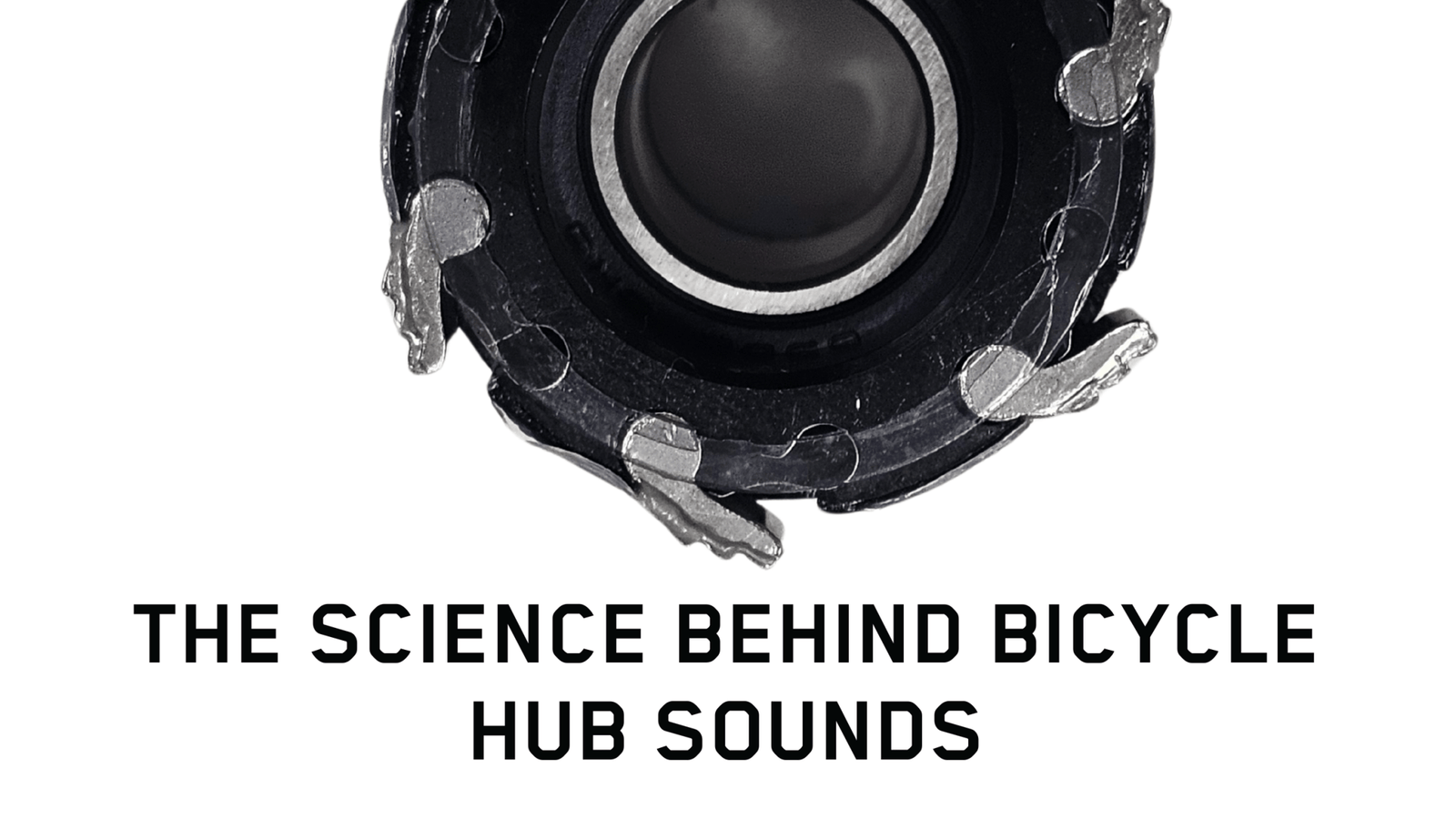Introduction
As cyclists, we've all experienced that satisfying clicking sound when coasting on our bikes. That distinctive noise comes from your bicycle's hub mechanism, and it's not just random noise - it's actually a sign of how your hub works and can even indicate its performance level.
In this post, we'll explain the science behind bicycle hub sounds, why some hubs are louder than others, and why that loud clicking is often associated with premium components.
How Bicycle Hub Pawls Work
The clicking sound you hear when coasting comes from a mechanism inside your rear hub called the "pawl and ratchet system." This ingenious design allows your wheel to keep spinning while you're not pedaling.
The Key Components
There are two main parts involved:
- Ratchet Ring: A circular ring with angled teeth
- Pawls: Small, spring-loaded components that engage with the teeth


The Mechanism in Action
Here's how the system works:
- When Pedaling: The pawls lock against the teeth on the ratchet ring, transferring your pedaling power to the wheel.
- When Coasting: The pawls slide over the teeth, creating that distinctive clicking sound as they bounce from tooth to tooth.
Each "click" you hear is a pawl sliding over a tooth on the ratchet ring. The more pawls and teeth there are, the more frequent the clicks.
More Pawls = Better Performance
Premium hubs often feature more pawls than budget options, typically 6 or more compared to 2-3 in basic hubs. This design choice offers several performance advantages:
1. Faster Engagement
With more pawls, there's less rotational distance before a pawl engages with a tooth. This means when you start pedaling again after coasting, power transfers to the wheel more quickly - a critical advantage in technical mountain biking or BMX riding where instant engagement is essential.
2. More Secure Power Transfer
Multiple pawls distribute the load across more contact points, reducing wear on individual components and allowing for greater torque transfer - particularly important for powerful riders or when climbing steep hills.
3. Redundancy
If one pawl fails or skips, others are still engaged, preventing catastrophic failure during high-torque situations like sprinting or climbing.
Why Premium Hubs Are Louder
The distinctive loud clicking sound of premium hubs comes from several design factors:
1. More Engagement Points
High-end hubs often have both more pawls AND more teeth on the ratchet ring, creating more engagement points and therefore more clicks per revolution of the wheel.
2. Material Quality
Premium hubs often use harder metals and more precise manufacturing, which can create a crisper, more resonant sound when the pawls engage with the teeth.
Some Caveats
While noise is often correlated with performance in bike hubs, it's not the only indicator of quality. Some premium hubs actually use innovative designs that are quieter while maintaining excellent performance characteristics. As with most things in cycling, there's no one-size-fits-all answer.
Additionally, if your normally loud hub suddenly becomes quiet, it might indicate that the pawls are not engaging properly, possibly due to contamination or inadequate lubrication. In this case, maintenance might be required.

